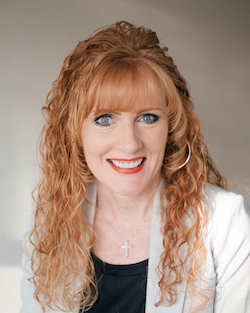By Alissa DeWitt, MCC
Many of us are seeing the effects that ineffective leadership has on people and organizations.
In a survey conducted by the American Psychological Association:
- 75 percent of American workers say their boss is the most stressful part of their workday
- 65 percent say they would take a new boss over a pay raise
The Gallup 2021 State of the Global Workplace Report indicates that 66 percent of U.S. employees continue to be “disengaged” and unmotivated.
These stats may seem disheartening, and it is for many who experience this reality first-hand, on a daily basis, in their workplace.
But here’s the good news: it doesn’t have to be this way!
Gallup’s report revealed that leadership accounts for at least 70 percent of the variance in team engagement – which means with more effective, CREATIVE leadership, organizations can absolutely solve the employee engagement crisis.
So, what does it mean to be a ‘CREATIVE’ vs. ‘REACTIVE’ leader?
‘REACTIVE’ leaders often show up like the command-and-control style leader. They tend to operate from a problem-focused mindset – seeing obstacles and challenges as a problem or a threat that must be eliminated.
When overused, this problem-focused (reactive) mindset is a result of fear and scarcity thinking where the leader, often unconscientiously, believes there is not enough time, knowledge, money, energy, talent, etc. to solve the recurring problems. This reactive mindset results in highs and lows that creates internal stress for the leader and, eventually, external stress for those around him.
‘CREATIVE’ leaders, on the other hand, show up as more collaborative, inspirational leaders. They tend to operate from a purpose-driven mindset – seeing obstacles and challenges as an opportunity to learn and grow individually and collectively as an organization. They don’t need to be the smartest person in the room, and their focus on purpose comes from an abundance mindset where they strongly believe there’s enough, that a solution exists, and they have resilience to hold the bigger vision in spite of the challenges.
Why is knowing whether leaders are ‘CREATIVE’ or ‘REACTIVE’ important?
Both ‘Creative’ and ‘Reactive’ tendencies are necessary and important in overall leadership. However, for leaders who are driven PRIMARILY by reactive tendencies, their leadership style will have a negative effect on productivity and profitability and is often the root cause of many of the employee engagement and culture related issues in companies.
For organizations who want to attract and retain the best and brightest industry talent, it is essential to elevate overall leadership effectiveness, which means more leaders operating with a ‘CREATIVE’ mindset.
How do we increase overall leadership effectiveness and move from ‘REACTIVE’ to ‘CREATIVE’?
The first step is understanding where your leaders are today. You can’t manage what you don’t measure.
Measurement is important because most leaders judge themselves by their ‘intentions’ rather than by their ‘actions’ which means they often have a blind spot when it comes to knowing the true impact on their team and organization.
Just like we can measure IQ [Intelligence Quotient] and EQ [Emotional Intelligence], we can also very effectively measure LQ [Leadership Quotient].
Leadership Quotient is the measure of overall leadership effectiveness – the degree to which a leader, or team of leaders, is operating from a ‘CREATIVE’ vs. ‘REACTIVE’ mindset.
Since leadership effectiveness is statistically correlated to business success, it’s essential to measure and know the LQ of your leaders and the quantifiable impact leadership is having on the organization. To measure LQ, we use a high quality, normed Leadership 360 Assessment that clearly maps the primary leadership mindset leaders are operating from and where they fall on the ‘Creative’ vs. ‘Reactive’ scale.
The Transition from ‘REACTIVE’ to ‘CREATIVE’…
This was the case with one of our clients—we’ll call her Sarah—who was unintentionally breaking relationships with her team and struggling to keep them motivated. She and her team were facing many challenges:
- Team members didn’t trust management or one another, weren’t willing to offer help and support to each other to meet deadlines and were generally not working well as a team.
- Employees said they didn’t feel respected or appreciated, which led to them doing the bare minimum and not willing to take ownership of hitting important department and company goals.
- There was frequent turnover of employees to other departments, as well as to other employers, due to the unhealthy team culture.
- It was taking a toll on both the leader’s and employees’ personal lives, going home each day from a stressful work environment.
Let me say this: none of these realities were Sarah’s intention as a leader. She saw what was happening, was frustrated, and did all she knew to do to fix it.
Because we know that leaders set the culture for their team or division by what they do, don’t do, allow or don’t allow, we began our work with Sarah by measuring and quantifying her current reality and the overall impact her leadership was truly having on those around her.
By gathering valuable information from a variety of perspectives, including: her direct supervisor, peers, employees, and others in the organization—as well as from her own self-assessment— we measured her Leadership Quotient to determine her level of being a ‘Creative’ vs. ‘Reactive’ leader.
We were able to identify not only “what” was or was not contributing to her level of effectiveness, but also “why” this was so.
The insight gained from understanding her ‘Creative’ and ‘Reactive’ tendencies became a catalyst for growth.
Using the assessment results as the launchpad for our coaching and development conversations, Sarah increased her level of awareness and accountability. She was engaged and eager to apply her learning to make things better for herself, her team, and her company. She cared. That was clear. And she put in the time and effort to make a profound transformation.
By the end of our time together, Sarah’s department had become the MODEL for employee engagement in her company.
She was thriving in her role, more effective, and less stressed. Her team was excited about their work. Their trust, appreciation and respect for their newly-transformed leader increased drastically. Because of this, Sarah’s department began performing better than ever! She was later asked by the VP of HR to share with her peers her journey of success.
Leaders Make a Difference…
Stories like Sarah’s are such an encouragement. While there is a trend in the U.S. of many employees being discouraged and disengaged, this reality CAN change.
And it DOES change, when leaders are willing to grow and when companies are willing to invest in raising their overall leadership effectiveness.
People spend the majority of their lives at work, and from what I’ve learned in my 30 years of business and leadership experience: the majority of employees want to contribute and provide value in a meaningful way, and they want to be engaged and successful at work.
When leaders become more aware, accountable and learn to operate primarily from a ‘CREATIVE’ mindset, they draw out the best from their teams, employee engagement increases, and they experience outstanding business results.

Founder | CEO & Executive Leadership Coach
Alissa@TheExecutiveImpact.com
www.TheExecutiveImpact.com
